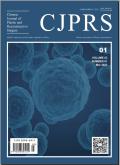Establishment and application of a fibrosis/scar biospecimen repository and systematic research platform
Chinese Journal of Plastic and Reconstructive Surgery
Pub Date : 2024-12-01
DOI:10.1016/j.cjprs.2024.10.003
引用次数: 0
Abstract
Fibrosis is a pathological outcome of a dysregulated repair response to injury, which can occur in any organ and have devastating effects on hundreds of millions of patients worldwide. However, challenges remain in delineating the complex and dynamic network regulating fibrosis, as well as translating this information into effective anti-fibrotic treatments. A comprehensive understanding of existing methodologies and the development of new research tools are essential for ensuring the transferability of findings from bench to bedside. In this review, we present a framework consisting of a large biospecimen repository that integrates diverse patient cohorts with corresponding clinical data, and a systematic research platform incorporating multiple layers of experimental strategies, primarily focused on skin fibrosis. We summarize current advancements and the applications of various tools for preclinical fibrosis research and examine the limitations of traditional methods used to simulate and investigate biomechanical signals in the fibrotic environment. Importantly, we highlight the strengths of research techniques and translational approaches of varying physiological relevance developed by us over the past decade. Collectively, we emphasize a trend toward more faithfully replicating the functional, structural, and biological complexity of fibrosis while providing high spatio-temporal control over soluble cues and intricate interactions. Our comprehensive overview of methodology paves the way for minimizing batch-to-batch variation and improving the reproducibility of experimental systems.
纤维化/瘢痕生物标本库及系统研究平台的建立与应用
纤维化是损伤修复反应失调的病理结果,可发生在任何器官,并对全球数亿患者造成破坏性影响。然而,在描述调节纤维化的复杂和动态网络以及将这些信息转化为有效的抗纤维化治疗方面仍然存在挑战。对现有方法的全面了解和新研究工具的开发对于确保从实验室到临床的研究结果的可转移性至关重要。在这篇综述中,我们提出了一个框架,包括一个大型生物标本库,整合了不同的患者队列和相应的临床数据,以及一个包含多层实验策略的系统研究平台,主要关注皮肤纤维化。我们总结了目前临床前纤维化研究的各种工具的进展和应用,并检查了用于模拟和研究纤维化环境中生物力学信号的传统方法的局限性。重要的是,我们强调了在过去十年中我们开发的各种生理学相关的研究技术和转化方法的优势。总的来说,我们强调了一种趋势,即更忠实地复制纤维化的功能、结构和生物学复杂性,同时对可溶性线索和复杂的相互作用提供高度的时空控制。我们对方法的全面概述为最大限度地减少批对批的变化和提高实验系统的可重复性铺平了道路。
本文章由计算机程序翻译,如有差异,请以英文原文为准。
求助全文
约1分钟内获得全文
求助全文
来源期刊

Chinese Journal of Plastic and Reconstructive Surgery
Surgery, Otorhinolaryngology and Facial Plastic Surgery, Pathology and Medical Technology, Transplantation
CiteScore
0.40
自引率
0.00%
发文量
115
审稿时长
55 days
 求助内容:
求助内容: 应助结果提醒方式:
应助结果提醒方式:


